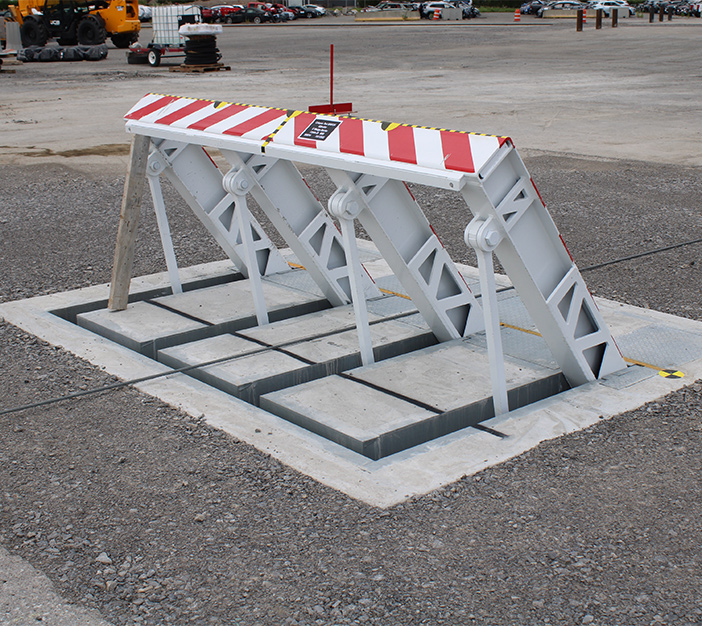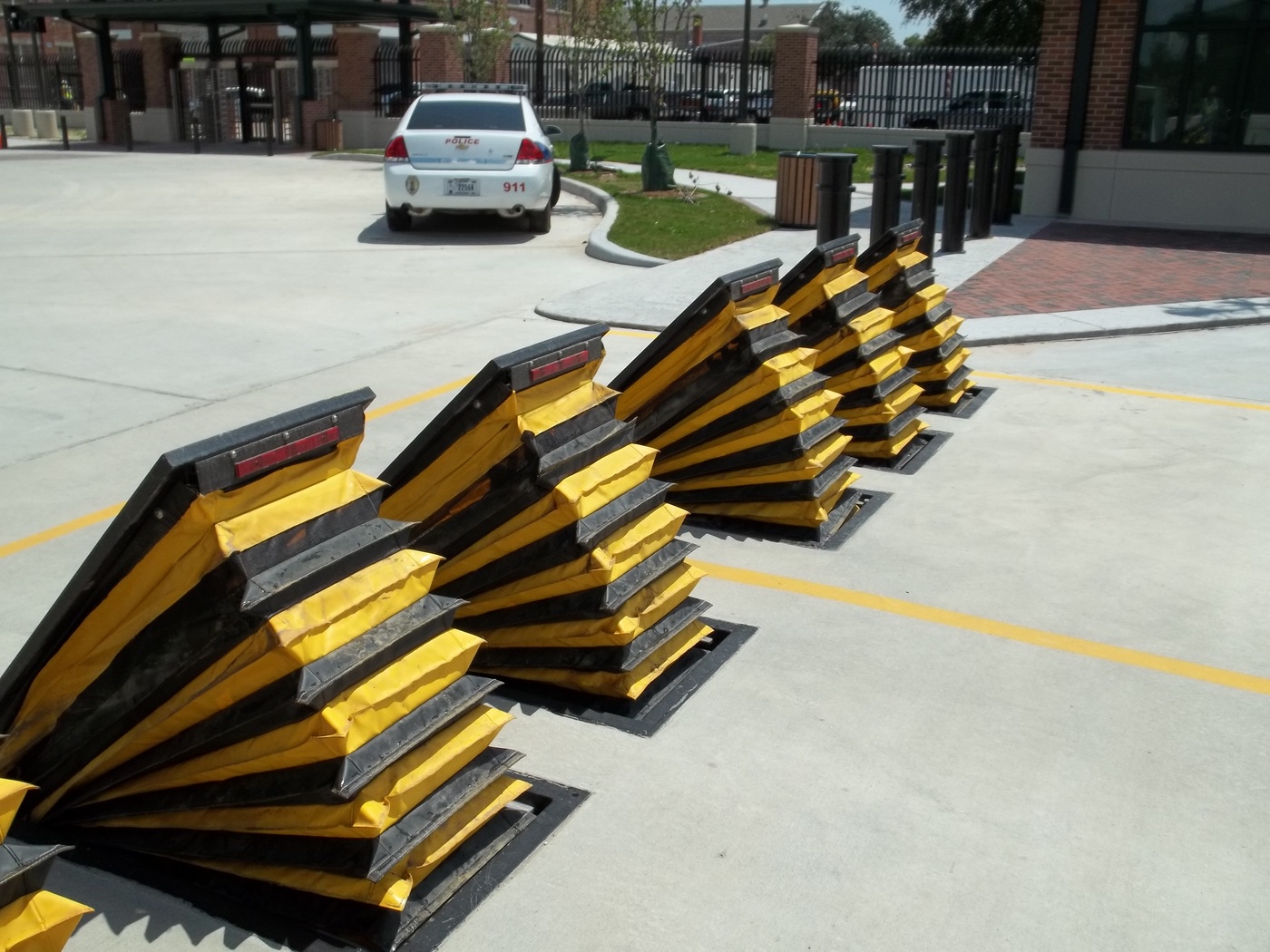Rumored Buzz on Wedge Barriers
Table of ContentsWhat Does Wedge Barriers Do?The Definitive Guide to Wedge Barriers

The smart Trick of Wedge Barriers That Nobody is Talking About
The staying force applied to
the cam to deploy release wedge plate 16 may be provided by an electromechanical actuator 84 or other various other. The spring assembly 54 and the actuator 84(e. Wedge Barriers. g., electromechanical actuator)might run together to translate the web cam and raise the wedge plate 16.
As mentioned above, the spring assembly 54 exerts a constant force on the web cam, while the electromechanical actuator might be regulated to apply a variable pressure on the camera, therefore enabling the lifting and decreasing( i. e., releasing and retracting )of the wedge plate 16. In certain personifications, the constant force applied by the spring setting up 54 might be flexible. g., electromechanical actuator) is handicapped. As will certainly be valued, the springtime setting up 54 may be covered and protected from particles or other elements by a cover plate(e. g., cover plate 68 displayed in FIG. 4) that might be significantly flush with the raised surface area 38 of the foundation 14. As discussed above, in the released placement, the wedge plate 16 serves to obstruct gain access to or traveling beyond the barrier 10. For instance, the barrier 10(e. g., the wedge plate 16 )might block pedestrians or lorries from accessing a residential property or pathway. As discussed over, the obstacle 10 is connected to the support 30 protected within the foundation 14,

front visit this website braces 71. Because of this, the link settings up 72 may pivot and turn to make it possible for the collapse and expansion of the link settings up 72 throughout retraction and implementation of the bather 10. The linkage settings up 72 reason movement of the wedge plate 16 to be restricted. If an automobile is taking a trip in the direction of the released wedge plate 16(e. For instance, in one situation, the safety legs 86 may be expanded duringmaintenance of the barrier 10. When the safety legs 86 are released, the safety legs 86 support the weight of the wedge plate 16 versus the surface 12. Because of this, the training system 50 may be shut down, serviced, removed, replaced, etc. FIG. 5 is partial viewpoint sight of a personification of the surface-mounted wedge-style barrier 10, showing the web cam 80 and the camera surfaces 82 of the training system 50. Especially, 2 camera surface areas 82, which are described as reduced camera surface areas 83, are placed listed below the webcam 80. The reduced web cam surfaces 83 might be fixed to the surface 12 (e. For instance, the lower camera surface areas 83 and the mounting plate 85 may develop a single piece that is secured to the support 30 by bolts or other mechanical fasteners. In addition, 2 webcam surface areas 82, which are described as upper camera surfaces 87, are positioned above the web cam 80 and paired to (e. In other embodiments, intervening layers or plates might be placed in between the surface area 12 and the lower webcam surface areas 83 and/or the wedge plate 16 and the top webcam surfaces 87 As stated above, the cam
80 translates along the webcam surface areas 82 when try this web-site the wedge plate 16 is raised from the pulled back position to the released position. In addition, as stated over, the spring setting up 54 (see FIG. 3 )may provide a force acting on the cam 80 in the direction 102 using spring pole 58, which might minimize the force the electromechanical actuator 84 is required to relate to the webcam 80 in order to activate and raise the wedge plate 16. 1 )to the released placement(see FIG. 4). As shown, the cam 80 includes track wheels 104(e. g., rollers), which contact and translate along the webcam surface areas 82 during procedure.